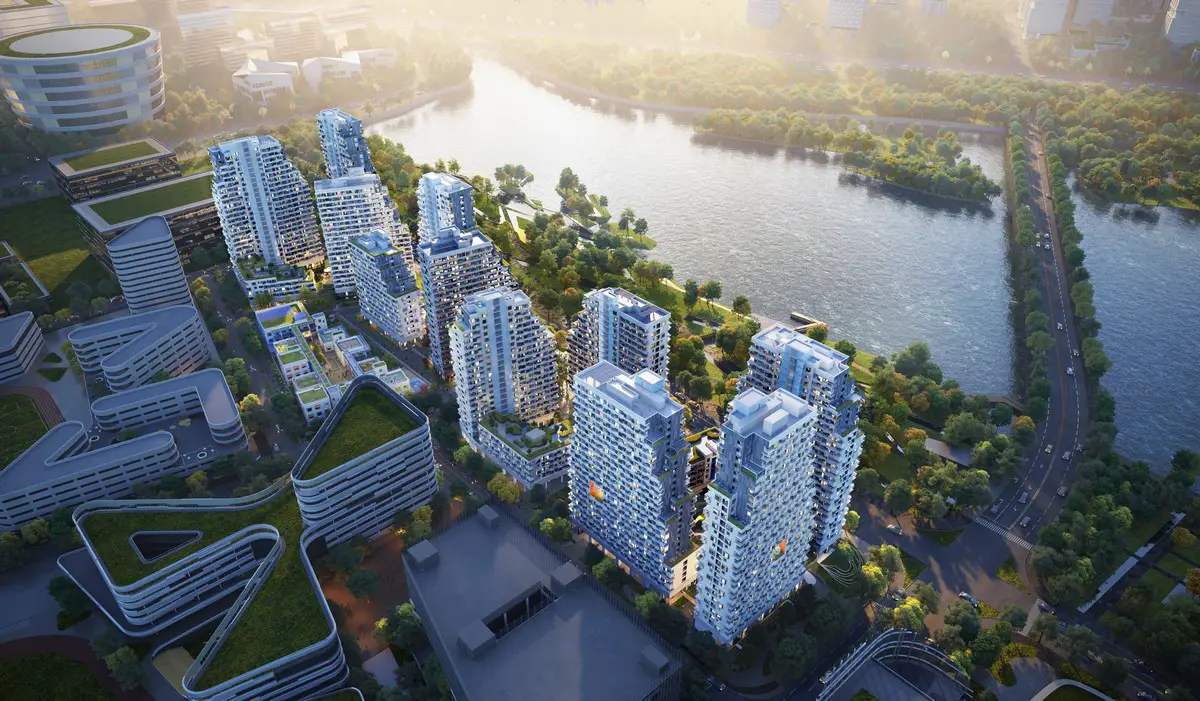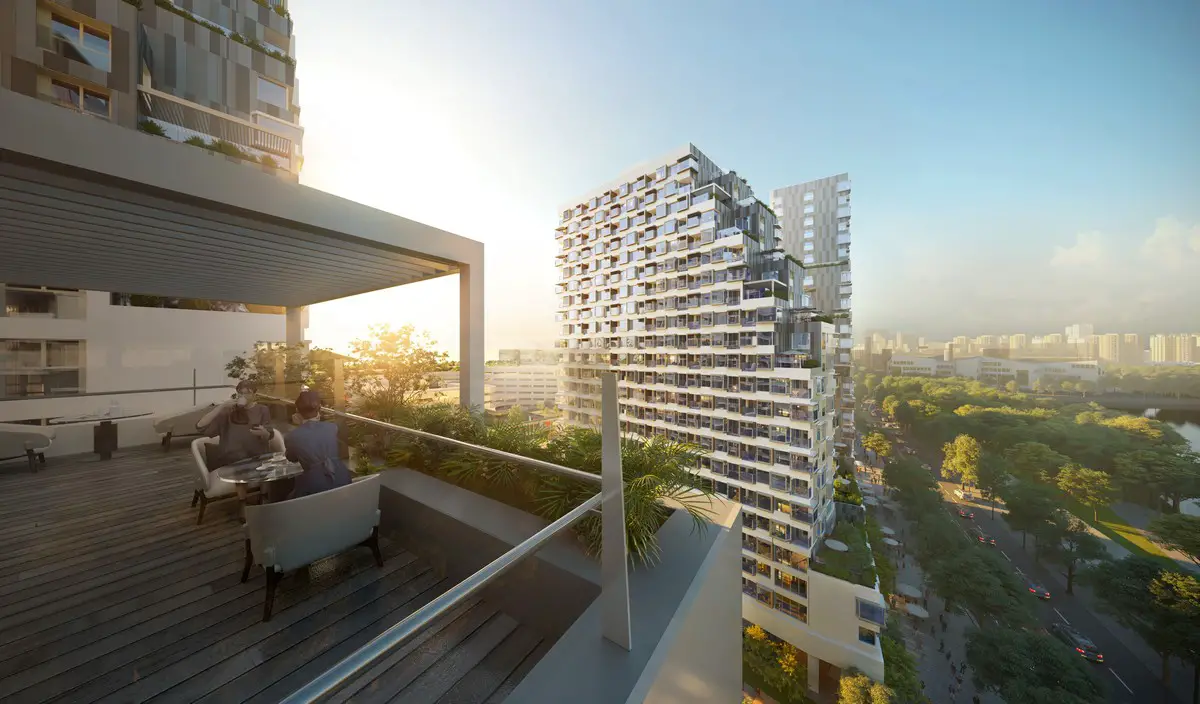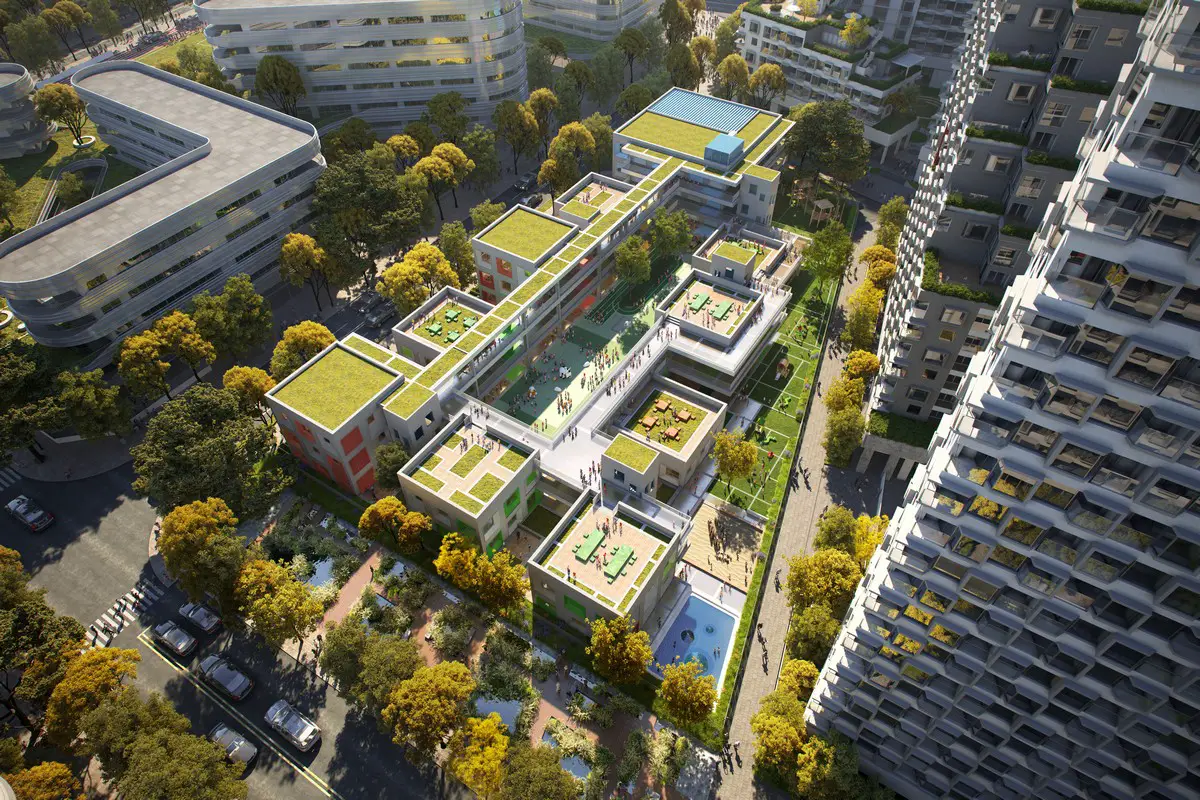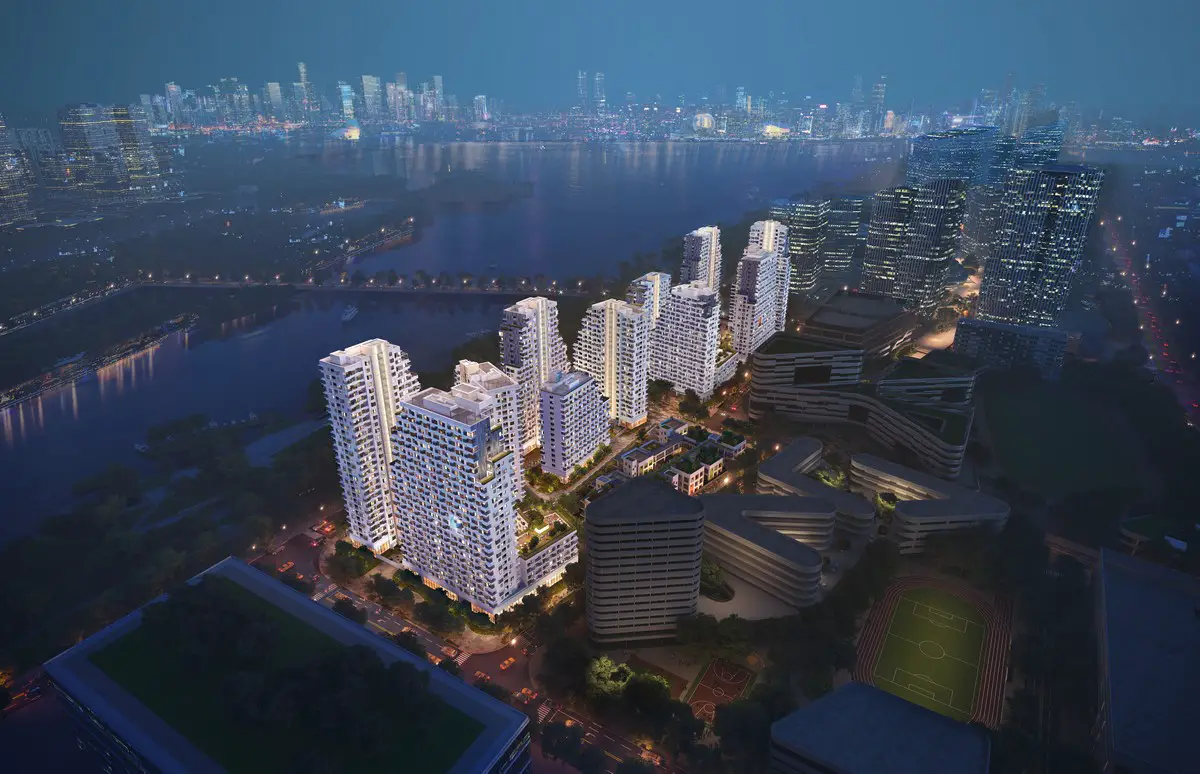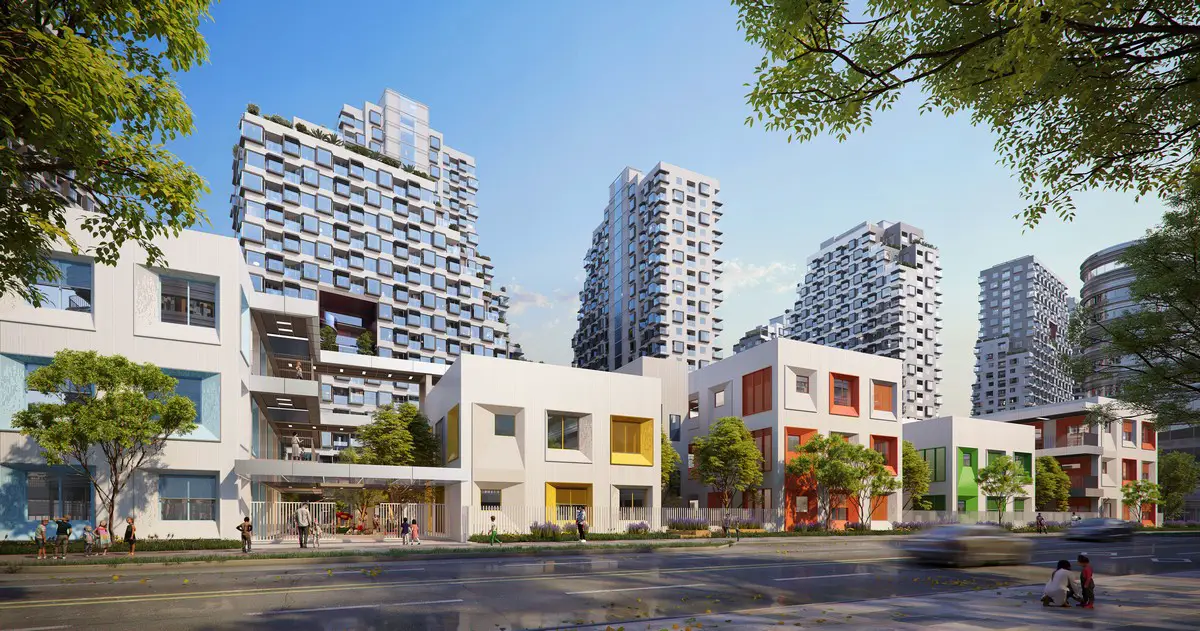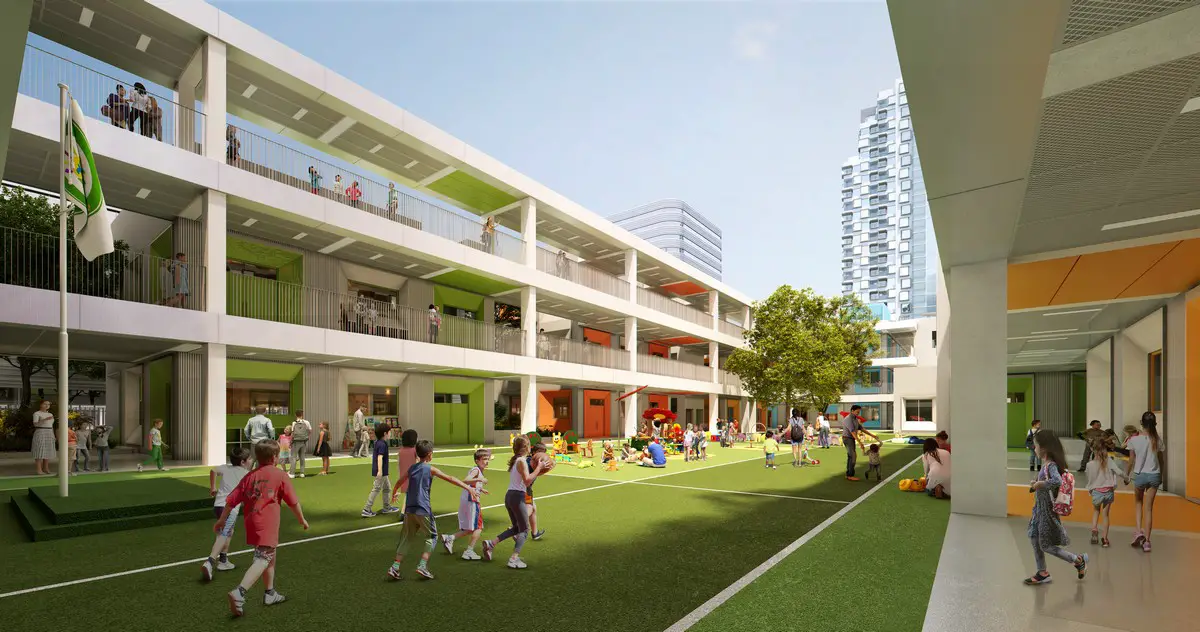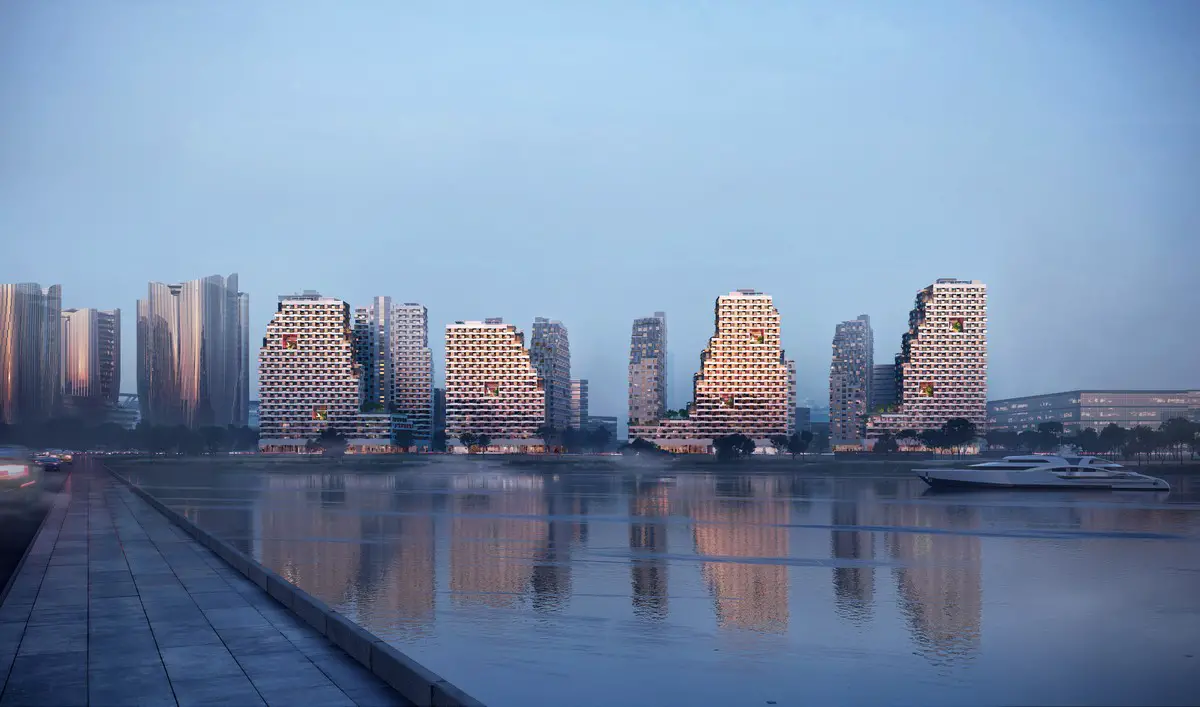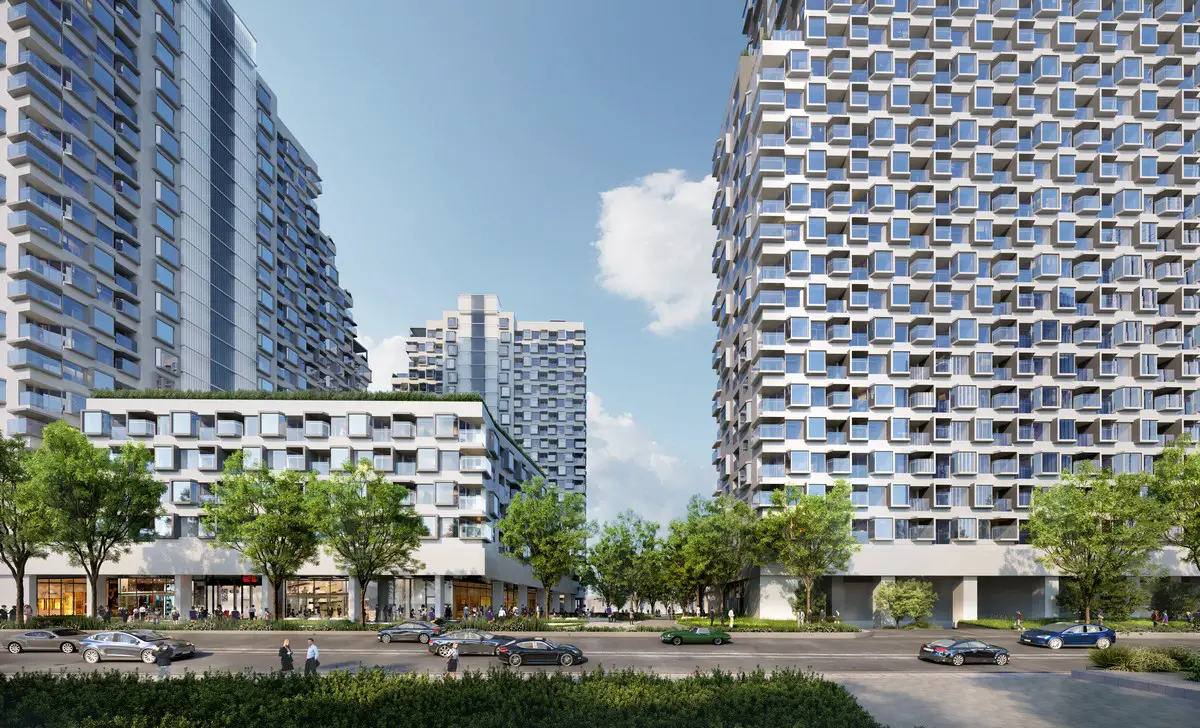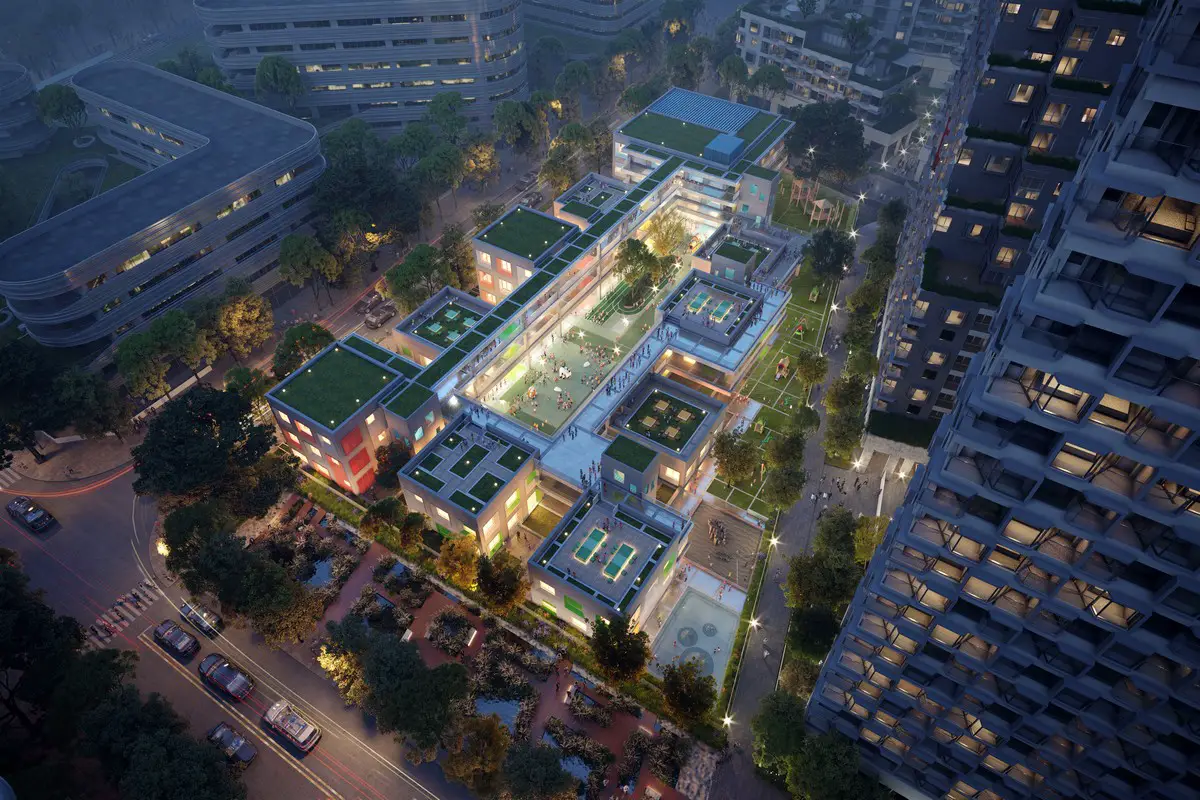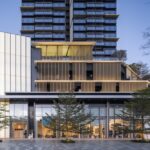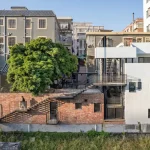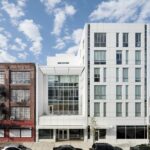Tencent P5 Housing, Shenzhen, China, real estate design images, Chinese concept building development
Tencent P5 Housing in Shenzhen
21 March 2024
Architects: MVRDV
Location: Shenzhen, China
Renders: © Atchain
Tencent P5 Housing, China
MVRDV’s new residential complex in Shenzhen offers a social environment for employees in Tencent’s smart city campus
Technology company Tencent has revealed a collection of projects currently under construction at its new campus in Shenzhen’s Qianhai bay, including the MVRDV-designed Tencent P5. Comprising 11 apartment towers arranged around four courtyards, as well as an adjacent kindergarten, it welcomes the company’s employees into a vibrant neighbourhood designed with egalitarianism and community in mind.
The Tencent campus is the centrepiece of the tech-focused development that is rapidly coming to define Qianhai bay, to the west of Shenzhen. The campus masterplan designed by NBBJ occupies a narrow peninsula at the mouth of the bay, providing the conditions for a large yet relatively self-contained campus following cutting-edge smart city ideas.
Located at the northern end of the campus, MVRDV’s design emphasises equality between residents: all units are identical in size and layout, with each providing a balcony or bay window to its occupant.
These apartment modules combine to create four clusters of apartment blocks, each arranged around a green courtyard. The buildings are terraced, supporting communal green spaces that can be accessed by all residents. The towers of the buildings rise up from 57 metres to 100 metres in height, positioned in a way that preserves views from the apartments towards the sea to the west and the bay to the east.
With its many public spaces and amenities, the project acts as an introduction to life at Tencent, providing ample opportunities for residents to connect with their neighbours and form friendships. At ground level, the courtyards offer residents large, forested green spaces to relax in as part of a green corridor that extends throughout the NBBJ masterplan. Two pedestrian streets cut through the site, supplementing these outdoor spaces with spaces for sports facilities and leisure amenities. Inside, the ground level of the buildings hosts a variety of shared amenities for residents. Large, multi-floor breakout spaces puncture the towers’ façades at a variety of levels, allowing residents to gather with others who live in the same part of the building and breaking the development into a number of smaller “neighbourhoods”.
The fifth block on the site is home to a kindergarten for the families of Tencent employees. This building also takes a courtyard configuration, composed of a series of blocks connected by corridors and walkways. The courtyard, along with the spaces between the blocks, provide safe and shaded playing spaces for the children, while the blocks themselves feature rooftop gardens.
“By contributing to Tencent’s smart city, we want to show that smart cities are also healthy cities, green cities, and social cities”, says MVRDV founding partner Winy Maas. “The attention in smart cities always goes to the technology, and our design of the Tencent residential complex certainly includes that. But in our conception, the technology-related aspects are inseparable from the social spaces, the green courtyards, the terraces. The technological goes hand-in-hand with the human.”
The design takes advantage of a number of the masterplan’s smart city features to ensure sustainability. For example, the basement level connects to a campus-wide network of automated vehicles, which can be used not only for personal transit but also for deliveries. The design aims to achieve a three-star Green Building label, China’s highest sustainability certification.
The construction of the Tencent residential complex started in early 2022, and is planned for completion in 2024. The design also marks a continuation of MVRDV’s engagement with the Tencent campus; in 2019, the firm’s campus design proposal – with a design shaped like a continuous undulating mountain range with a waterfront park winding its way around the base – was a finalist in the campus masterplan competition.
Tencent P5 Housing in Shenzhen, China – Building Information
Architecture: MVRDV – https://www.mvrdv.com/
Project Name: Tencent P5
Location: Shenzhen, China
Year: 2020–
Client: Tencent Technology
Size and Programme: 206,000m2 – staff residences and kindergarten
Sustainability certification: Three Star Green Building Label (targeted)
hoto © Atchain
Architect: MVRDV
Founding Partner in charge: Winy Maas
Partner: Wenchian Shi
Director MVRDV Shanghai: Peter Chang, Steven Smit
Design Team: Kyo Suk Lee, Guang Ruey Tan, Tadeu Batista, Cai Zheli, Olga Marelja,
Fredy Fortich, Chi Zhang, Andrius Ribikauskas, Cai Huang, Jiameng Li, Bertrand Tan, Andy
Tsui, Xiaodong Luo, Anastasia Voutsa, Ruoxi Wang, Dorota Kaczmarek, Ruochen Zhang,
Yihong Chen, Licheng Wang, Siyi Pan
Copyright: MVRDV Winy Maas, Jacob van Rijs, Nathalie de Vries
Partners:
Co-architect: A&E design
Contractor: Shanghai Baoye Group Corp.,LTD.
Structural engineering, MEP: A&E design
Cost calculation: Arcadis
Environmental advisor: ATKINS
Visualisations: © Atchain, © Tiptop
About MVRDV
Architecture practice MVRDV was set up in 1993 in Rotterdam, The Netherlands by Winy Maas, Jacob van Rijs, and Nathalie de Vries. Finding early success with projects such as the headquarters for the Dutch Public Broadcaster VPRO and WoZoCo housing for the elderly in Amsterdam, MVRDV developed into an internationally renowned firm. Now, the three founding partners lead a dynamic and optimistic team of over 300 alongside partners Frans de Witte, Fokke Moerel, Wenchian Shi, Jan Knikker, and Bertrand Schippan. With four satellite offices in Shanghai, Paris, Berlin, and New York, MVRDV engages globally in providing solutions to contemporary architectural and urban issues.
MVRDV operates via a research-based and highly collaborative design method, engaging experts from all fields, clients, and stakeholders in their rigorous technical and creative investigation. This results in exemplary and outspoken buildings, urban plans, studies, and objects that enable our cities and landscapes to develop towards a better future. MVRDV works with BIM and has official in-house BREEAM and LEED assessors. Together with Delft University of Technology, MVRDV runs The Why Factory, an independent think tank and research institute providing an agenda for architecture and urbanism by envisioning the city of the future.
Visualisations: © Atchain
Tencent P5, Shenzhen, China images / information received 210324
Location: Shenzhen, southern China
Architecture in China
China Architecture Designs – chronological list
Shanghai Architecture Walking Tours by e-architect
New Architecture in Shenzhen
Design: Aedas
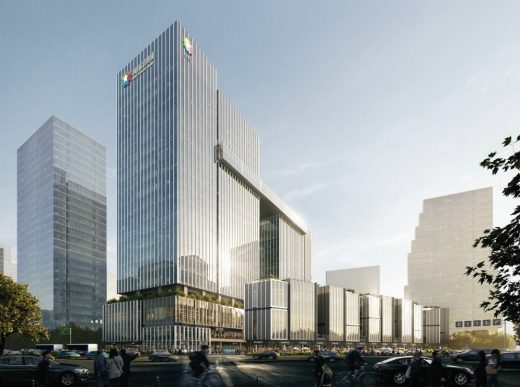
render : Aedas architects
CTG Investment Building Shenzhen
Design: Fumihiko Maki Architects
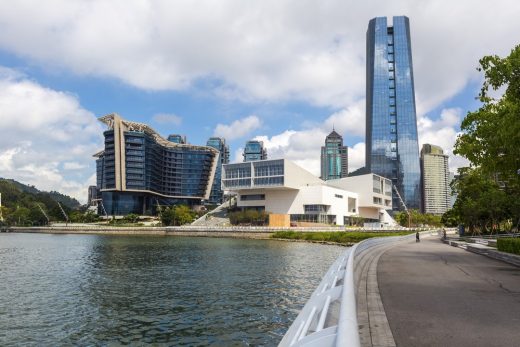
photograph © Design Society
Design Society Shenzhen Building
Design: Co-Direction Design
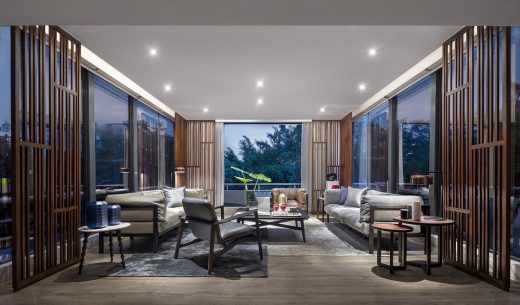
photographs : B+M studio, Zhao Hongfei, Wei Yidong
Shenzhen Oriental Garden Villa Chamber
Design: Aedas, Architects
Gmond International Building in Shenzhen
Design: HASSELL
Qianhai Mawan Mile in Shenzhen
Chinese Architecture Offices – Design Practice Listings
Comments / photos for the Tencent P5 Housing, Shenzhen, China designed by MVRDV development page welcome.

